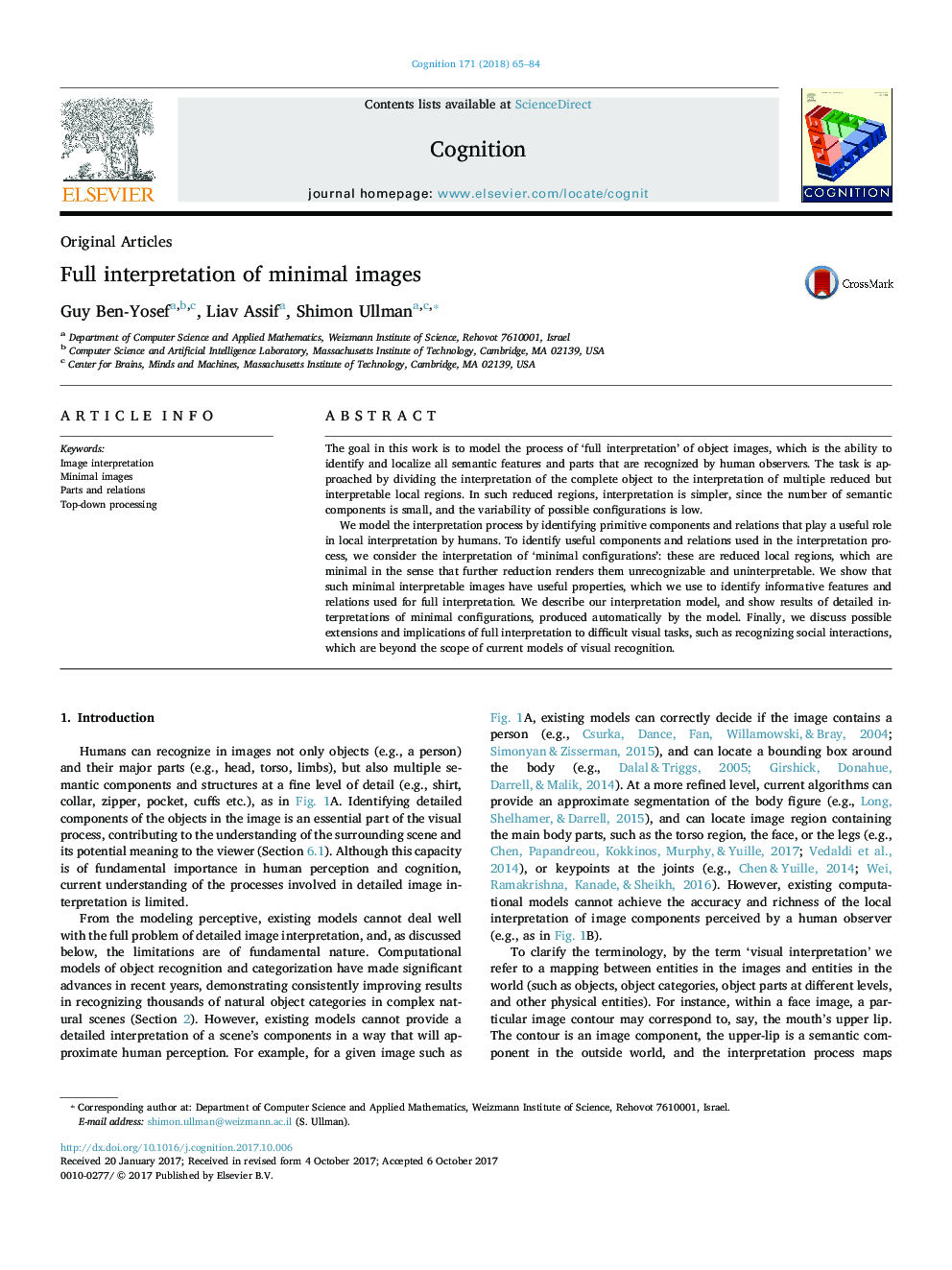| Article ID | Journal | Published Year | Pages | File Type |
|---|---|---|---|---|
| 7285587 | Cognition | 2018 | 20 Pages |
Abstract
We model the interpretation process by identifying primitive components and relations that play a useful role in local interpretation by humans. To identify useful components and relations used in the interpretation process, we consider the interpretation of 'minimal configurations': these are reduced local regions, which are minimal in the sense that further reduction renders them unrecognizable and uninterpretable. We show that such minimal interpretable images have useful properties, which we use to identify informative features and relations used for full interpretation. We describe our interpretation model, and show results of detailed interpretations of minimal configurations, produced automatically by the model. Finally, we discuss possible extensions and implications of full interpretation to difficult visual tasks, such as recognizing social interactions, which are beyond the scope of current models of visual recognition.
Related Topics
Life Sciences
Neuroscience
Cognitive Neuroscience
Authors
Guy Ben-Yosef, Liav Assif, Shimon Ullman,
